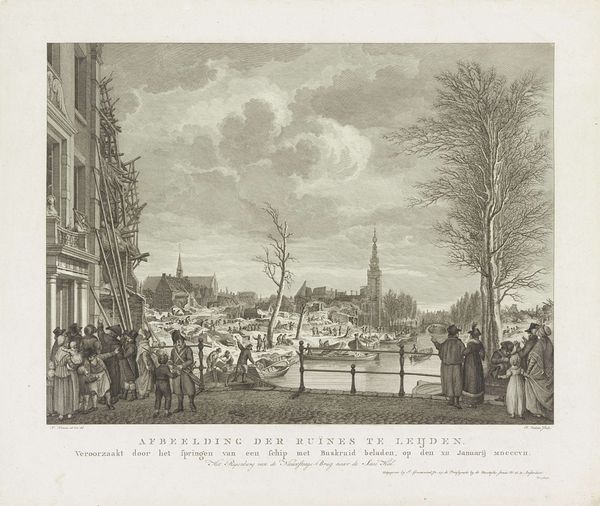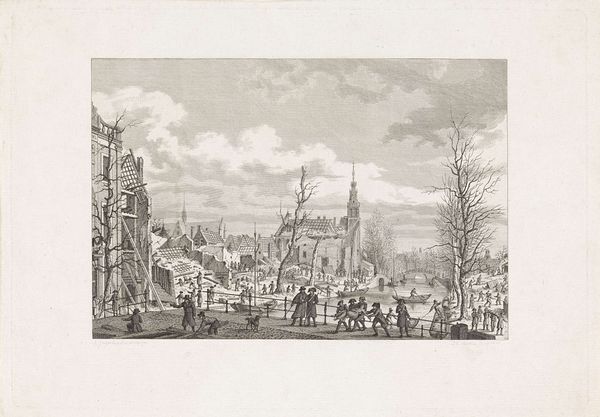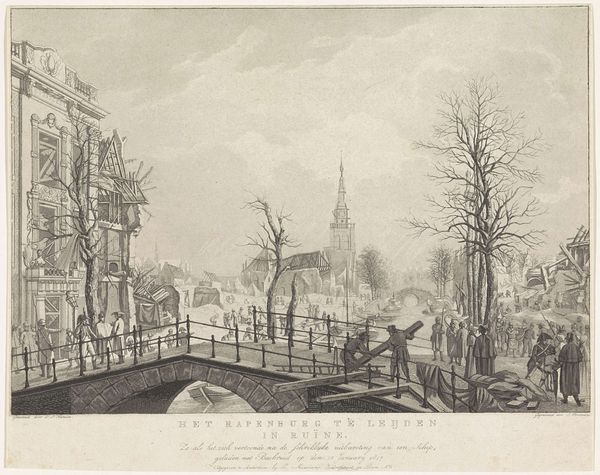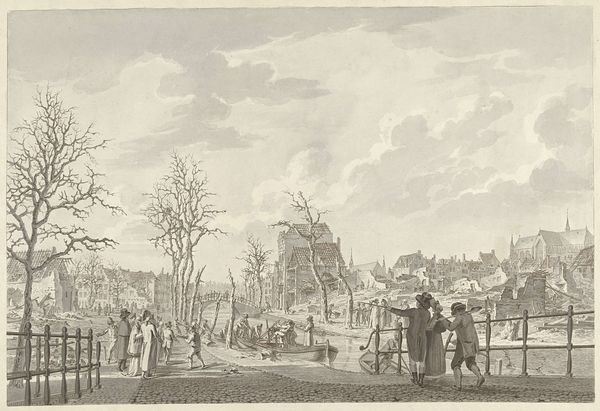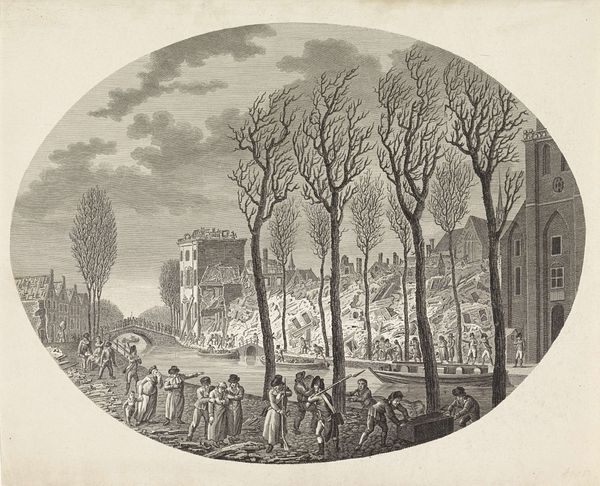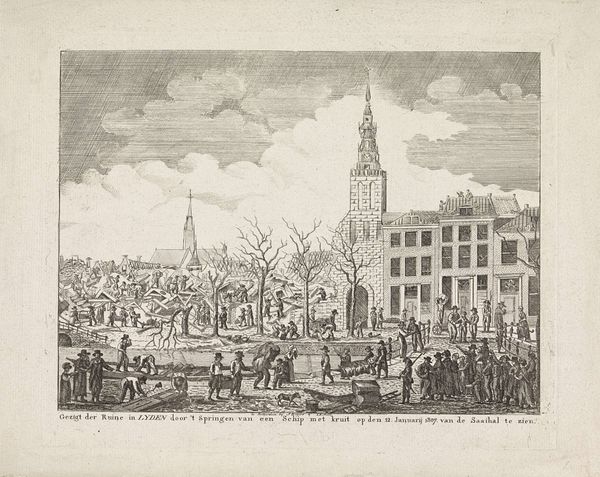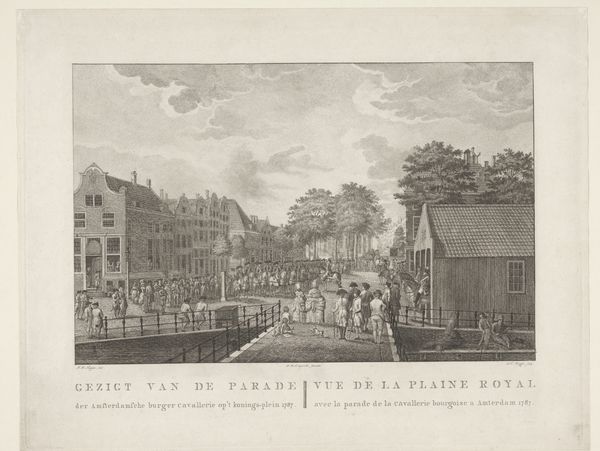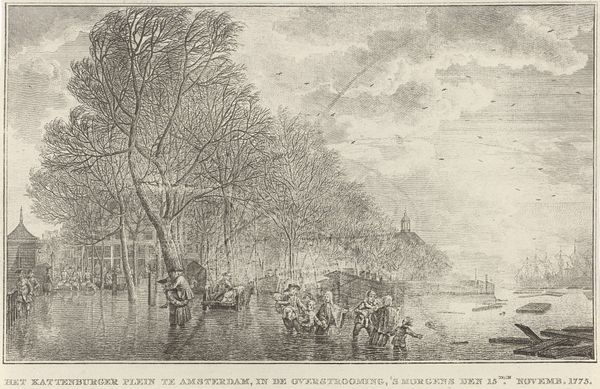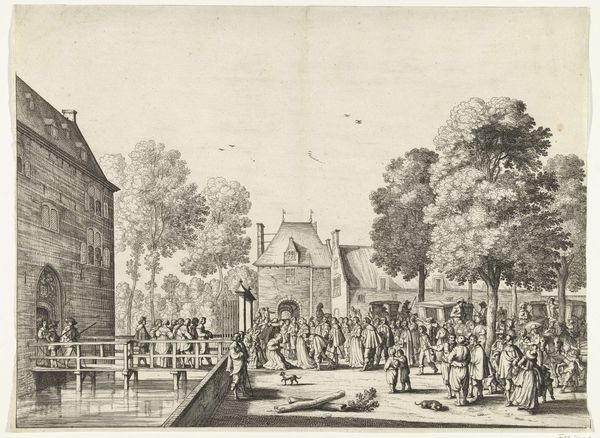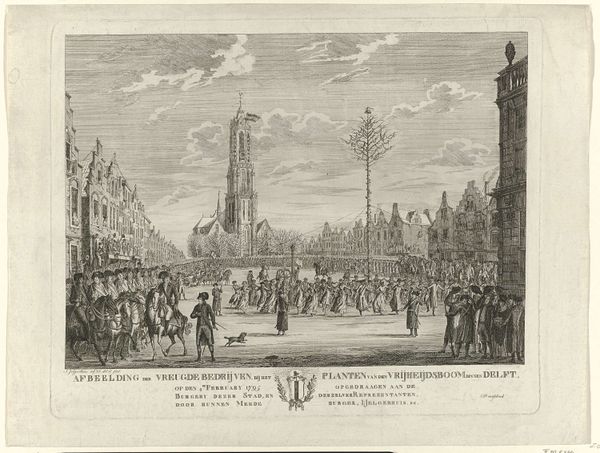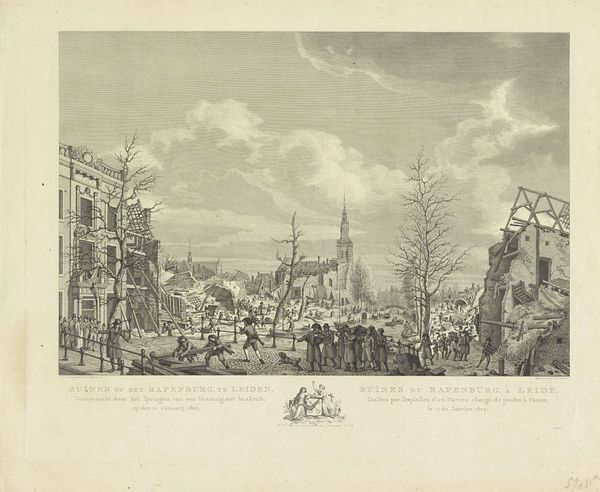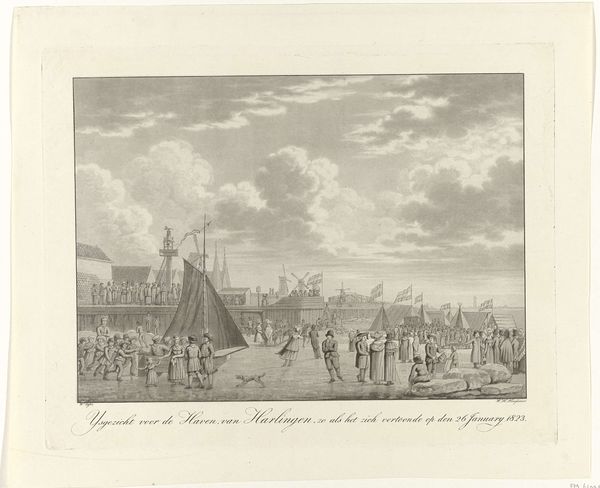
print, etching
#
neoclacissism
#
narrative-art
#
dutch-golden-age
# print
#
etching
#
landscape
#
cityscape
#
history-painting
Dimensions: height 340 mm, width 459 mm
Copyright: Rijks Museum: Open Domain
Here we see Hermanus Numan's depiction of the Rapenburg in 1807, capturing the scene after disaster struck. The scaffolding dominating the left side of the image is more than just a construction aid; it is a powerful symbol. Scaffolding has been used to depict restoration in art for centuries. Think back to images of the Tower of Babel, where scaffolding signified ambition, or consider how Renaissance artists used it to represent the rebuilding of Rome and of the Church after the Sack. Here, it embodies the spirit of recovery in Leiden after the explosion. The image stirs feelings tied to collective memory, a poignant reminder of human resilience. This echoes through time, seen in modern photographs after earthquakes or floods: images of a community piecing life back together. It is an archetype of restoration. Ultimately, Numan’s work speaks to how images of rebuilding evoke shared emotions and become powerful markers of our collective experience, reflecting both vulnerability and hope in the face of devastation.
Comments
No comments
Be the first to comment and join the conversation on the ultimate creative platform.
